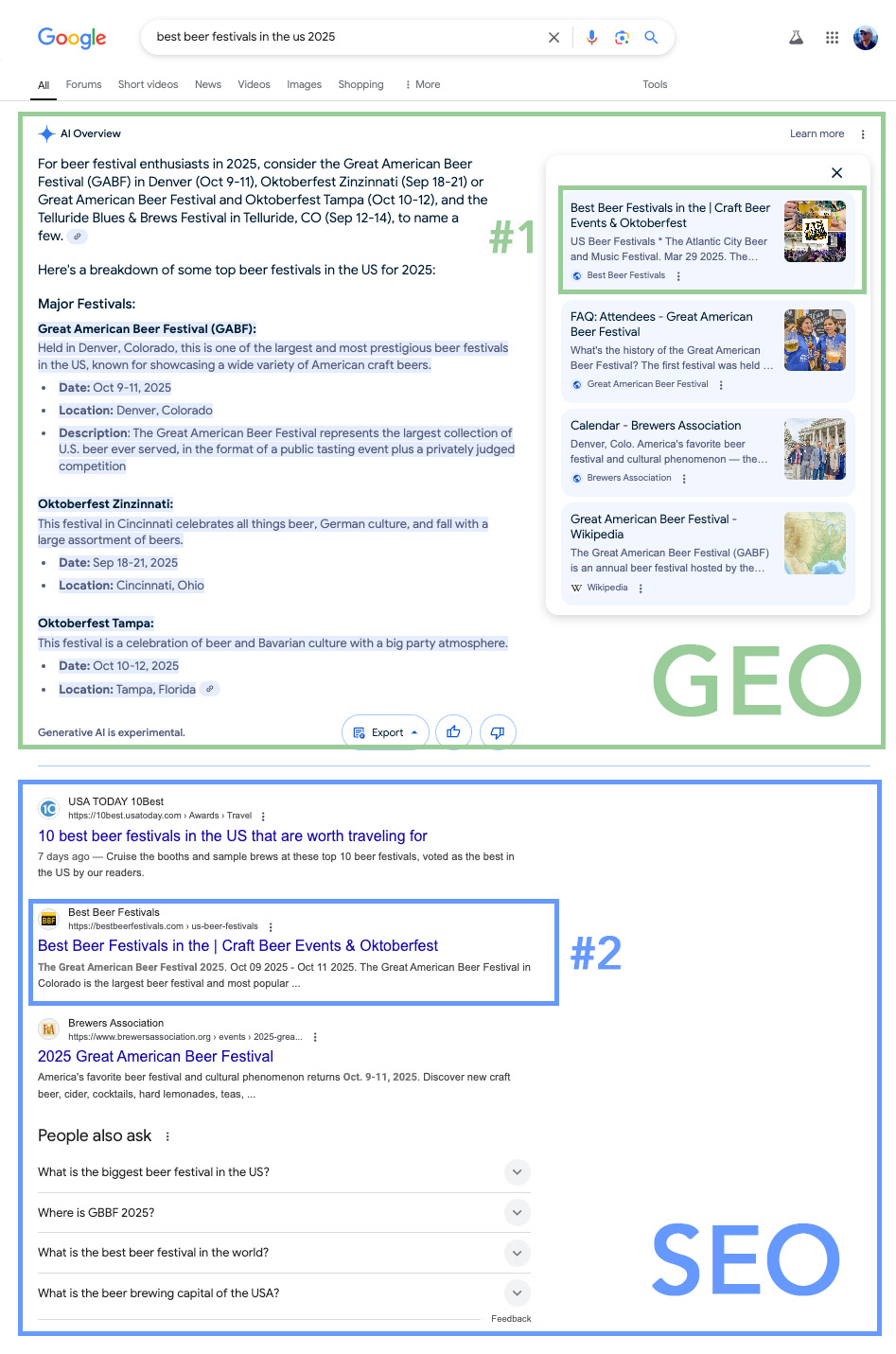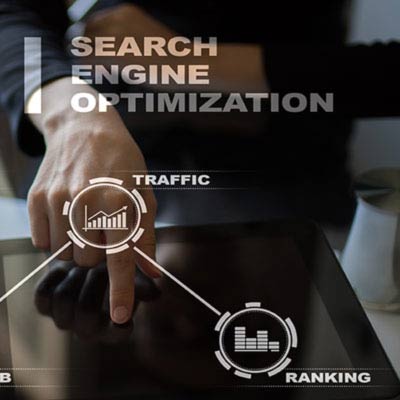Introduction
The digital world is changing fast, and so are the ways businesses get noticed online. Generative Engine Optimization (GEO) is stepping up as the next big thing, much like Search Engine Optimization (SEO) did years ago. Instead of focusing only on Google rankings, GEO helps businesses stay relevant in AI-powered search results, ensuring their brand is included and cited in tools like ChatGPT, Google Gemini, and Perplexity.
The Role of Structured Data in GEO and SEO
Structured data benefits both SEO and GEO, as it provides context for traditional search engines to understand content for rich results and enables newer AI models to parse, cite, and summarize information for generative answers. For GEO, structured data is crucial because it helps AI tools understand content more effectively, leading to a higher chance of being selected, cited, and quoted in AI-generated responses. For SEO, structured data enhances visibility through rich snippets, knowledge panels, FAQ displays, and faster indexing.
- In SEO: Structured data helps Google understand meaning, produce enhanced SERP displays, and trust content authority.
- In GEO: Structured data acts as machine-readable training data that feeds AI engines, making your website a preferred citation source for generative answers.
- In AI Search: Generative engines prioritize content that is semantically structured and validated via schema.org markup.
Think of structured data as a “trusted identifier” that tells both Google and AI: This content is clear, organized, and ready to be used as a reliable answer.
What is GEO?
GEO is all about making sure AI-driven platforms pick up and share your content in the best possible way. Instead of stuffing pages with keywords for search engines, businesses now need to feed AI models with structured, semantic, context-rich data that makes their content quotable and reference-ready.
Pros and Cons of GEO vs. SEO
Pros of GEO
- More natural and conversational content.
- Better personalization for users.
- Works across multiple AI-powered platforms.
- Future-proof strategy as AI continues to evolve.
- Structured data boosts AI citations and visibility.
Cons of GEO
- Less predictable than SEO rankings.
- Requires new skills to optimize for AI.
- Less control over AI-generated results.
- Depends heavily on clean structured data and schema accuracy.
GEO vs. SEO: Key Differences
| Feature | SEO | GEO |
|---|---|---|
| Focus | Search engine rankings (Google, Bing) | AI-driven responses (ChatGPT, Gemini, Perplexity) |
| Optimization | Keywords, backlinks, metadata | Structured data, semantic clarity, AI-ready content |
| Interaction | One-way (static results) | Two-way (conversational + cited answers) |
| Data Interpretation | HTML + meta tags | JSON-LD + Knowledge Graph signals |
| Visibility Format | Rich snippets, featured snippets | AI citations, conversational mentions, source links |
How to Start with GEO?
Optimizing your website for Generative Engine Optimization begins with structured data integration, followed by semantic clarity and AI-friendly architecture. Here is the correct hierarchy to follow:
1. Apply Structured Data (Most Important)
- Implement the applicable Structured Data to your site and pages (Link: Structured data full gallery). Structured data allows both search engines and AI models to interpret, cite, and trust your content. Without STD, your content may appear in SEO but remain invisible to AI-driven citations.
Example of Structured Data for GEO & SEO
<script type="application/ld+json">
[
{
"@context": "https://schema.org",
"@type": "Article",
"mainEntityOfPage": {
"@type": "WebPage",
"@id": "https://cdwsolutions.com/blog/geo-vs-seo-structured-data-ai-visibility"
},
"headline": "GEO vs SEO: Why Structured Data Is the Key to AI Visibility and Future Search Rankings",
"description": "A practical guide explaining how structured data powers both SEO rich results and GEO (Generative Engine Optimization) by enabling AI models to parse, cite, and summarize your content for AI-driven answers.",
"image": [
"https://cdwsolutions.com/admin/img/geo-seo.jpg"
],
"author": {
"@type": "Person",
"name": "Jorge A. Carrillo"
},
"publisher": {
"@type": "Organization",
"name": "Conversion-Driven Web Solutions",
"url": "https://cdwsolutions.com"
},
"datePublished": "2025-10-13",
"dateModified": "2025-10-13",
"inLanguage": "en-US",
"articleSection": [
"SEO",
"GEO",
"Structured Data"
],
"keywords": [
"GEO",
"Generative Engine Optimization",
"SEO",
"Structured Data",
"Schema Markup",
"AI Search",
"AI Citations",
"Rich Results"
],
"about": [
{ "@type": "Thing", "name": "Search Engine Optimization" },
{ "@type": "Thing", "name": "Generative Engine Optimization" },
{ "@type": "Thing", "name": "Structured Data" },
{ "@type": "Thing", "name": "Schema.org" }
]
},
{
"@context": "https://schema.org",
"@type": "FAQPage",
"mainEntity": [
{
"@type": "Question",
"name": "What is the difference between GEO and SEO?",
"acceptedAnswer": {
"@type": "Answer",
"text": "SEO focuses on ranking in traditional search engines using signals like keywords, links, and metadata. GEO focuses on being selected, cited, and summarized by AI-driven systems such as ChatGPT and Gemini, which prioritize semantically structured, high-clarity content."
}
},
{
"@type": "Question",
"name": "Why is structured data crucial for GEO and SEO?",
"acceptedAnswer": {
"@type": "Answer",
"text": "Structured data helps search engines produce rich results and improves crawlability for faster indexing (SEO). For GEO, schema markup provides machine-readable context that enables AI models to parse, cite, and accurately summarize your content—significantly increasing the chance of being referenced in generative answers."
}
},
{
"@type": "Question",
"name": "How do I start optimizing my site for GEO?",
"acceptedAnswer": {
"@type": "Answer",
"text": "Begin by implementing clean, error-free JSON-LD for key types like Article, FAQPage, Organization, Event, Product, and BreadcrumbList. Then use clear content hierarchy (H3/H4), concise answer blocks, semantic internal links, and ensure fast, mobile-friendly UX."
}
}
]
}
]
</script>2. Create Clear & Logical Site Architecture
- Use a hierarchical structure with semantic URLs.
- Add breadcrumb navigation and apply
BreadcrumbListschema.
3. Optimize Content for AI Interpretation
- Use question-based headers and concise AI-friendly answer blocks.
- Start pages with short summary statements — this is what AI reads first.
4. Improve Internal Linking & Semantic Connections
- Use contextual anchors like “See beer festivals in Germany” instead of generic “Click here”.
5. Optimize for Conversational and AI Search
- Format content to answer Who, What, Where, When, Why, How in short blocks.
6. Speed, Mobile-Friendliness & UX Signals
- Fast-loading and mobile-optimized content increases AI trust ranking.
7. AI-Friendly Media Optimization
- Use
ImageObjectschema and accurate alt text to feed AI vision models. - Provide transcripts for multimedia content.

The graphic in this article illustrates how Generative Engine Optimization (GEO) and Search Engine Optimization (SEO) appear in Search Engine Results Pages (SERPs) at the same time for a user searching for the best beer festivals in the U.S. While BestBeerFestivals.com (website owned by the author of this article) ranks second in SEO below USAToday.com, it secures the top position in GEO. This demonstrates the importance of integrating GEO alongside SEO to create a balanced and effective optimization strategy.
Conclusion
SEO helps you appear. GEO helps you get quoted. Structured data is the bridge between both. As AI engines evolve, they will increasingly rely on schema and semantic clarity to determine which websites to trust, cite, and feature in conversational answers.
SEO + Structured Data = Visibility.
GEO + Structured Data = Authority & AI Citations.
The websites that combine both will lead the next generation of search experience.




























